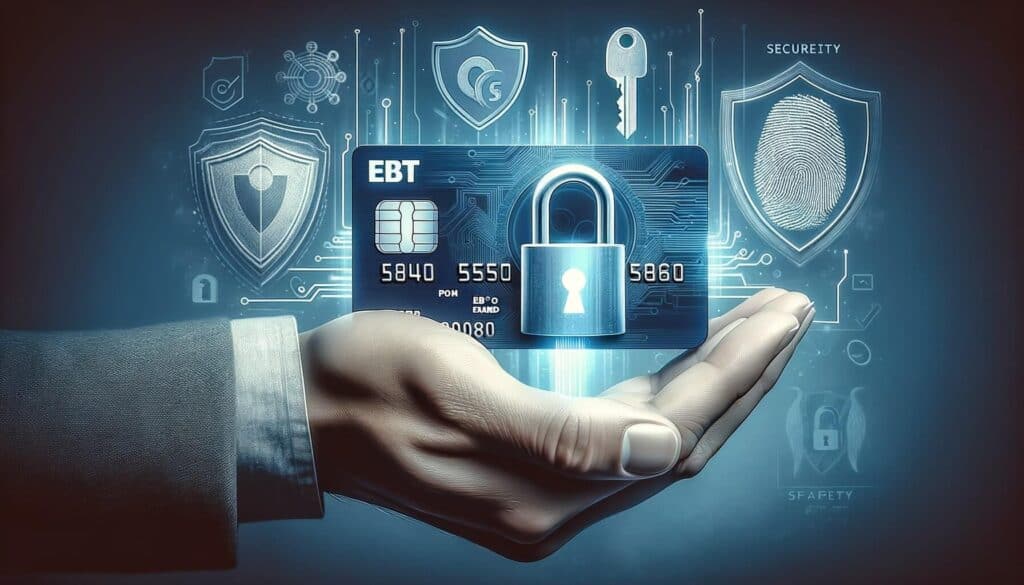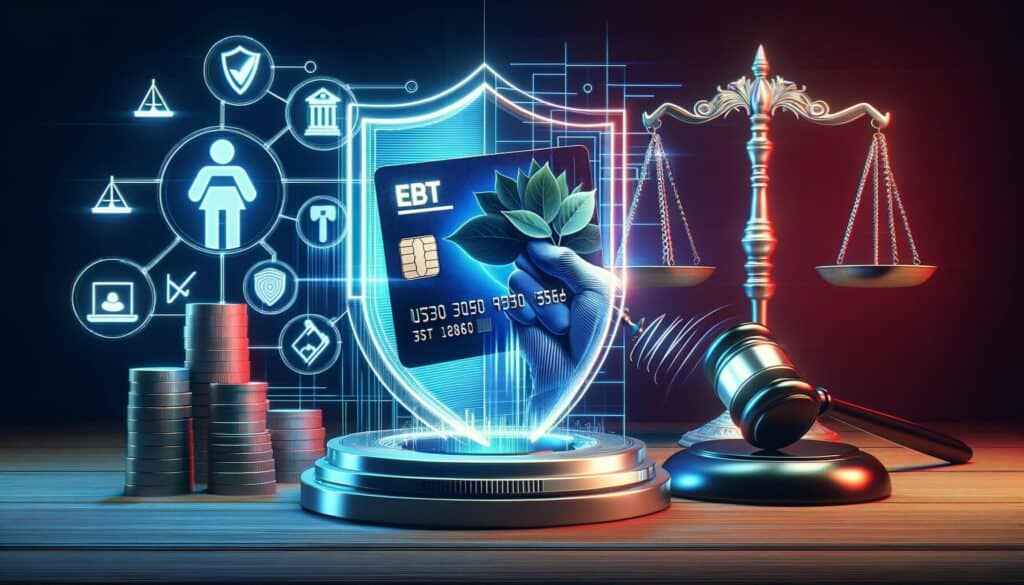
By Sharon Watson January 30, 2025
In today’s digital age, where technology has made our lives more convenient, it has also opened doors for fraudulent activities. Electronic Benefit Transfer (EBT) fraud is a growing concern, as it not only affects individuals who rely on government assistance but also puts a strain on the economy. Understanding the importance of EBT fraud prevention is crucial to safeguarding your benefits and ensuring that those who truly need assistance receive it.
This comprehensive guide will provide you with valuable insights into recognizing different types of EBT fraud, best practices for safeguarding your EBT card, monitoring your EBT account, reporting fraudulent activity, government initiatives, and resources for further education.
Recognizing the Different Types of EBT Fraud: Common Scams and Techniques

EBT fraud can take various forms, and it is essential to be aware of the common scams and techniques used by fraudsters. One prevalent type of EBT fraud is the sale or exchange of benefits for cash. Fraudsters may approach EBT cardholders, offering to buy their benefits at a discounted rate. This illegal activity not only deprives individuals of their rightful benefits but also enables fraudsters to profit from the exchange.
Another common scam is the misuse of EBT cards by unauthorized individuals. This can occur when someone borrows or steals an EBT card to make unauthorized purchases. Fraudsters may also engage in identity theft, obtaining personal information to apply for EBT benefits under someone else’s name. These fraudulent activities not only harm the individuals whose identities are stolen but also strain the resources available for those in genuine need.
How to Safeguard Your EBT Card: Best Practices for Keeping Your Benefits Secure

Protecting your EBT card is crucial to prevent unauthorized access and potential fraud. Here are some best practices to keep your benefits secure:
1. Treat your EBT card like cash: Keep your card in a safe place and never lend it to anyone. Treat it as you would treat cash, as losing your EBT card is equivalent to losing money.
2. Memorize your PIN: Avoid writing down your Personal Identification Number (PIN) and never share it with anyone. Memorizing your PIN ensures that only you can access your benefits.
3. Be cautious of phishing attempts: Fraudsters may attempt to trick you into revealing your personal information through phishing emails or phone calls. Be wary of any unsolicited requests for your EBT card details or personal information.
4. Regularly change your PIN: It is advisable to change your PIN periodically to minimize the risk of unauthorized access. Choose a unique and strong PIN that is not easily guessable.
5. Keep your contact information up to date: Ensure that your contact information, such as your address and phone number, is accurate and up to date. This will enable you to receive important notifications regarding your EBT account.
Monitoring Your EBT Account: Tips for Regularly Checking and Reviewing Transactions

Regularly monitoring your EBT account is essential to detect any fraudulent activity promptly. Here are some tips for effectively checking and reviewing your transactions:
1. Keep track of your receipts: Whenever you make a purchase using your EBT card, keep the receipts as proof of the transaction. This will help you cross-reference your purchases with the transactions listed on your EBT account.
2. Set up account alerts: Many EBT programs offer the option to set up account alerts via email or text message. These alerts can notify you of any transactions made with your EBT card, allowing you to quickly identify any unauthorized activity.
3. Review your transaction history: Take the time to regularly review your EBT account’s transaction history. Look for any unfamiliar or suspicious transactions and report them immediately.
4. Report discrepancies promptly: If you notice any discrepancies between your receipts and the transactions listed on your EBT account, contact your EBT program’s customer service immediately. Prompt reporting can help prevent further fraudulent activity and protect your benefits.
Reporting EBT Fraud: Steps to Take if You Suspect or Witness Fraudulent Activity
If you suspect or witness EBT fraud, it is crucial to take immediate action to protect yourself and others. Here are the steps to follow when reporting EBT fraud:
1. Gather evidence: Collect any evidence related to the fraudulent activity, such as receipts, transaction records, or any other relevant documentation. This evidence will support your report and aid in the investigation.
2. Contact your EBT program’s customer service: Reach out to your EBT program’s customer service department to report the fraudulent activity. Provide them with all the necessary details and evidence you have gathered.
3. File a police report: In cases of identity theft or significant fraud, it is advisable to file a police report. This will create an official record of the incident and may assist in the investigation.
4. Report to the appropriate authorities: Depending on your location, there may be specific agencies or departments responsible for investigating EBT fraud. Research and report the incident to the appropriate authorities to ensure that the fraudulent activity is thoroughly investigated.
EBT Fraud Prevention Measures: Initiatives and Strategies Implemented by Government Agencies

Government agencies are actively working to combat EBT fraud and implement preventive measures. These initiatives aim to protect the integrity of the EBT system and ensure that benefits reach those who genuinely need them. Here are some key EBT fraud prevention measures implemented by government agencies:
1. Enhanced data analytics: Government agencies are utilizing advanced data analytics to identify patterns and anomalies that may indicate fraudulent activity. By analyzing transaction data, agencies can detect suspicious behavior and take appropriate action.
2. Collaboration with law enforcement agencies: Government agencies collaborate with local, state, and federal law enforcement agencies to investigate and prosecute EBT fraud cases. This partnership ensures a coordinated effort to combat fraud and bring perpetrators to justice.
3. Public awareness campaigns: Government agencies conduct public awareness campaigns to educate EBT cardholders about the risks of fraud and the importance of safeguarding their benefits. These campaigns aim to empower individuals with knowledge and encourage them to report any suspicious activity.
4. Implementation of biometric technology: Some government agencies are exploring the use of biometric technology, such as fingerprint or facial recognition, to enhance EBT card security. Biometric authentication can help prevent unauthorized access and reduce the risk of fraud.
Educating Yourself and Others: Resources for Learning More About EBT Fraud Prevention
To stay informed about EBT fraud prevention, it is essential to educate yourself and others. Here are some valuable resources for learning more about EBT fraud prevention:
1. Government websites: Visit the official websites of government agencies responsible for administering EBT programs. These websites often provide information on fraud prevention, reporting procedures, and resources for EBT cardholders.
2. Online forums and communities: Join online forums and communities where EBT cardholders share their experiences and knowledge about fraud prevention. Engaging with others can provide valuable insights and tips for protecting your benefits.
3. Non-profit organizations: Non-profit organizations dedicated to assisting individuals in need often provide resources and educational materials on EBT fraud prevention. Explore their websites or reach out to them for guidance.
4. Local community centers: Local community centers may offer workshops or seminars on EBT fraud prevention. Check with your nearest community center to see if they provide any educational programs on this topic.
Frequently Asked Questions (FAQs)
Q1. What should I do if I lose my EBT card?
A1. If you lose your EBT card, contact your EBT program’s customer service immediately to report the loss. They will guide you through the process of obtaining a replacement card and securing your benefits.
Q2. Can I share my EBT card with a family member or friend?
A2. No, sharing your EBT card is against the rules and can lead to potential fraud. Your EBT card is issued to you alone, and only you should use it to access your benefits.
Q3. How can I protect myself from phishing attempts?
A3. Be cautious of any unsolicited requests for your EBT card details or personal information. Do not click on suspicious links or provide sensitive information over the phone unless you are certain of the legitimacy of the request.
Q4. What should I do if I suspect someone is committing EBT fraud?
A4. If you suspect someone is committing EBT fraud, gather any evidence you can and report the incident to your EBT program’s customer service or the appropriate authorities. Your report may help prevent further fraudulent activity.
Q5. Can I change my PIN online?
A5. The process for changing your PIN may vary depending on your EBT program. Check your program’s website or contact customer service to inquire about the available options for changing your PIN.
Conclusion
EBT fraud prevention is crucial to protect the integrity of government assistance programs and ensure that benefits reach those who genuinely need them. By understanding the different types of EBT fraud, implementing best practices to safeguard your EBT card, regularly monitoring your EBT account, and promptly reporting any fraudulent activity, you can contribute to the prevention of EBT fraud.
Government agencies are also taking proactive measures to combat fraud through enhanced data analytics, collaboration with law enforcement agencies, public awareness campaigns, and the implementation of biometric technology. By educating yourself and others about EBT fraud prevention through available resources, you can stay informed and actively contribute to the fight against EBT fraud. Remember, protecting your benefits not only benefits you but also helps create a fair and equitable system for all.